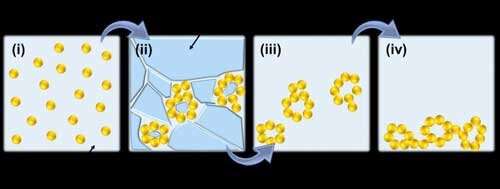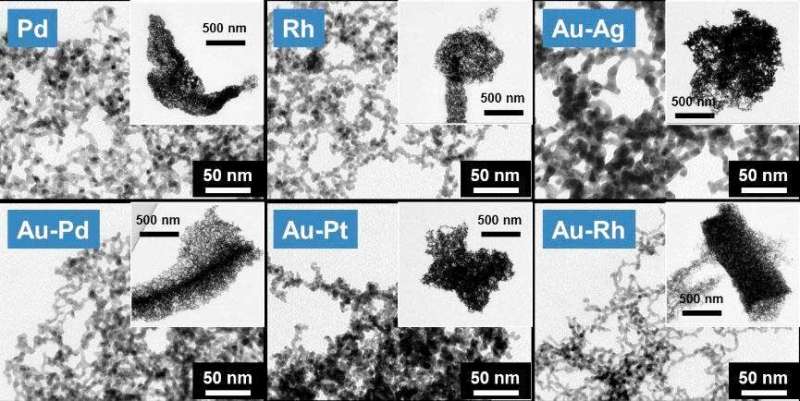Multi-scale structured materials for electrocatalysis and photoelectrocatalysis

As a new class of porous materials, noble metal aerogels (NMAs) have drawn attention for their self-supported architectures, high surface areas and their many optically and catalytically active sites, enabling impressive performance in diverse fields.
However, current fabrication methods suffer from long fabrication periods, unavoidable impurities, and uncontrolled multiscale structures, discouraging practical applications.
Dr. Ran Du from China has been an Alexander von Humboldt research fellow at TU Dresden since 2017. In collaboration with the Dresden chemists Dr. Jan-Ole Joswig and Professor Alexander Eychmüller, they recently crafted a novel freeze-thaw method capable of acquiring multi-scale structured noble metal aerogels as superior photoelectrocatalysts for electro-oxidation of ethanol, promoting their application for fuel cells.
Their work has now been published as a cover story in Angewandte Chemie International Edition, titled "Freeze-Thaw-Promoted Fabrication of Clean and Hierarchically-Structured Noble Metal Gels for Electrocatalysis and Photoelectrocatalysis."
Ran Du and his team found unusual self-healing properties of noble metal gels in their previous work. Inspired by these findings, a freeze-thaw method was developed as an additive-free approach to directly destabilise dilute metal nanoparticle solutions (concentration of 0.2-0.5 mM).

Upon freezing, large aggregates were generated due to the intensified salting-out effects incurred by the dramatically raised local solute concentration; meanwhile, they were shaped at the micrometer scale by in situ formed ice crystals.
After thawing, aggregates settled down and assembled to monolithic hydrogels as a result of their self-healing properties. Purified and dried, clean hydrogels and the corresponding aerogels were obtained.
Due to the hierarchically porous structures, the cleanliness, and the combined catalytic/optical properties, the resulting gold-palladium (Au-Pd) aerogels were found to display impressive light-driven photoelectrocatalytic performance, delivering a current density of up to 6.5 times higher than that of commercial palladium-on-carbon (Pd/C) for the ethanol oxidation reaction.
"The current work provides a new idea to create clean and hierarchically structured gel materials directly from dilute precursor solutions, and it should adapt to various material systems for enhanced application performance for catalysis and beyond," says chemist Ran Du.
More information: Ran Du et al. Freeze-Thaw-Promoted Fabrication of Clean and Hierarchically Structured Noble-Metal Aerogels for Electrocatalysis and Photoelectrocatalysis, Angewandte Chemie International Edition (2020). DOI: 10.1002/anie.201916484
Provided by Dresden University of Technology




















